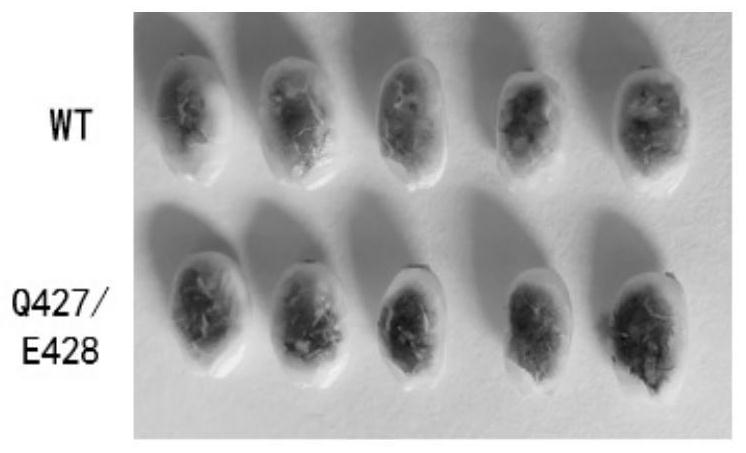Polypeptide for increasing amylose content of plants, and nucleic acid and application thereof
A polynucleotide and plant technology, applied in the fields of crop genetics and biotechnology, can solve problems such as increasing amylose content, and achieve the effect of increasing amylose content
- Summary
- Abstract
- Description
- Claims
- Application Information
AI Technical Summary
Problems solved by technology
Method used
Image
Examples
Embodiment 1
[0123] Example 1. Construction of gene editing vectors and screening of mutation sites
[0124] 1. Construct the ABE-nCas9 base editor targeting rice endogenous GBSS1 gene (such as figure 1 shown)
[0125] The ABE base editor can realize the base conversion of A / T->G / C within a certain sequence window range. The present invention uses the ABE-nCas9 base editor as a carrier to design sgRNA in the rice endogenous GBSS1 gene ( The sgRNA shown in Table 1) were respectively cloned into the ABE-nCas9 vector to form a base editor targeting the rice endogenous GBSS1 gene, and the amino acid encoded by the rice endogenous GBSS1 gene is shown in SEQ ID No.1.
[0126] Table 1 The sgRNA sequence targeting the rice GBSS1 gene
[0127] sgRNA ID guide-PAM sequence (5'-3') A-GBSS10 ATGCAGGAGGACGTCCAGAT (SEQ ID NO. 8)
[0128] 2. Genetic transformation of rice and identification of transgenic plants
[0129] The rice variety Xiushui 134 was used as the experimental m...
PUM
 Login to View More
Login to View More Abstract
Description
Claims
Application Information
 Login to View More
Login to View More - R&D
- Intellectual Property
- Life Sciences
- Materials
- Tech Scout
- Unparalleled Data Quality
- Higher Quality Content
- 60% Fewer Hallucinations
Browse by: Latest US Patents, China's latest patents, Technical Efficacy Thesaurus, Application Domain, Technology Topic, Popular Technical Reports.
© 2025 PatSnap. All rights reserved.Legal|Privacy policy|Modern Slavery Act Transparency Statement|Sitemap|About US| Contact US: help@patsnap.com



